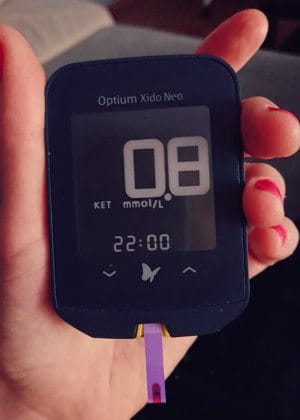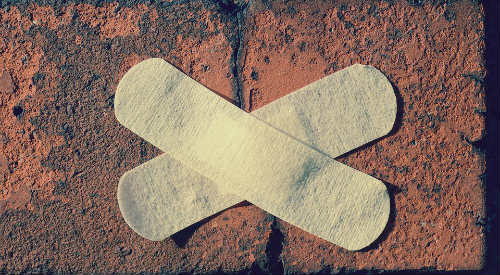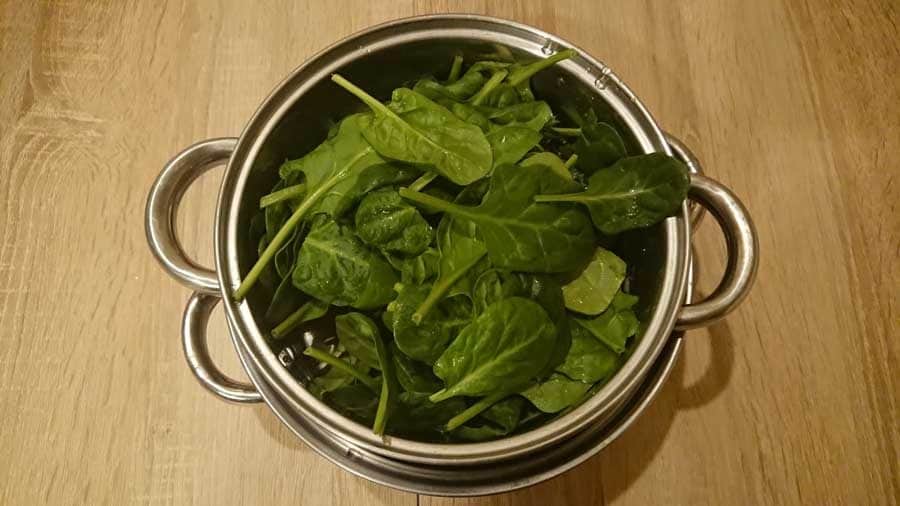
Keto Pancakes (The Ultimate Recipe For Ketogenic Pancakes)
May 3, 2018
Keto On Vacation: Hello After A Break And My Keto-Unfriendly Trip To Seychelles
June 2, 2018This is the essential guide that will teach you how to get into ketosis and explain (in an accessible way) the mechanics and tricks of getting there.
Hello my dear friend! If you’re reading this article, I suppose you are aware of tons of great benefits of being in the state of ketosis and you are ready to reap them all. That’s awesome!
I bet you already know that the main “rule of thumb” of how to get into ketosis is rather simple: just eat below 20 g net carbs daily and you will induce ketosis within a few days (at the latest). Sounds simple. But does it really work this way?
My own experience shows that in many cases this isn’t that simple… and that is why I’ve created this guide.
Once you finish reading this guide, you will be in ketosis for sure…
No, I’m just kidding. You may not reach ketosis by then yet, but you will know exactly what to do to get there, how to get back (if you cheated or binged) and how long it may take in your specific case.
I promise to be brief and not beat around the bush. Just pure science, facts and tips. Let’s get started!
How Long Does It Take To Get Into Ketosis? Variables At Play

This is very often the level of blood ketones I get and I am very happy with it.
Before we get into the practical part of this guide, let’s discuss the optimal range of blood ketone levels and explain what it really takes to put your body into ketosis (what has to happen in your body so that it enters ketosis).
Optimal Ketone Levels Indicating Ketosis Are…
Generally, anything above 0.5 mmol/L is considered ketosis. The most optimal range for most people (especially those interested in weight loss) is between 1.0 – 3 mmol/L of blood ketones (BHB).
The most reliable way of measuring ketones is through blood and that’s what I recommend.
Make sure to use common sense and don’t obsess about chasing the highest possible level of blood ketones. Anything above 0.5 mmol/L is fine.
It’s better to chase your (weight loss or health) goals instead of chasing ketones. Just do your best with your diet (don’t get off the wagon too often) and they will COME.
Ketosis Begins Only When You (Have To) Use The Reserve Tank
You will get into ketosis the moment your body runs out of glycogen stores (both in your liver and muscles).
When there is no glucose (sugar fuel) in your body any more, it has no other choice than to get to the reserve tank and use the alternative fuel (fat).
This is the moment when your liver starts to produce ketones that will power your brain and your whole body. That’s when ketosis “officially” begins.

To get into ketosis (switch to the “alternative” fuel), you need to deplete your glycogen stores at first.
If you are doing a keto diet for the first time, you’ll most likely suffer from the keto flu and feel awful for a few days (or even a few weeks). This is the transition period when your body learns how to use fat as fuel and produce ketones.
Remember that once the adaptation is over, you will feel better than ever and you will be way closer to your goals.
You can learn more about ketosis and how a keto diet works in the keto diet section of this website.
Factors That Influence How Long It Takes You To Get Into Ketosis
There are lots of variables that influence how much time you need to induce ketosis in your body. This is a very individual matter that differs from person to person.
Once you get more experience with a keto diet, you’ll know exactly how much time you need to get into optimal ketosis (between 1.0-3.0 mmol/L).
When you get to know all these factors, you’ll be able to manipulate them efficiently. You’ll know how to go into and out of ketosis almost as if you had a magic button for it. Sounds pretty cool, doesn’t it?

It’s a very individual issue to determine how long it takes you to get into ketosis.
Okay, so here are the main variables that will influence how much time your body needs to get into ketosis (remember that this list still isn’t complete and there may be even more factors):
You current diet a.k.a what you’ve been eating so far
If you’ve been on the SAD (Standard American Diet) your whole life, you’ve been eating tons of carbs every day and your body can only run on glucose. It’s probably never produced many ketones.
In such a case, it will take you much longer to make a switch than it would if you were a person following some form of a low-carb diet restricting pastas, sweets, bread and cakes.
Your age

That’s why a relatively thin and fit 18-year old may only need a few days to get into ketosis while a 60-year-old overweight lady may need even two or three weeks to get there.
Your sex

That’s how nature designed it, so there is no need to worry. Women simply (again) need a bit more patience.
Your weight

Your fitness level

How often and how intensively you work out

If you do that a couple of times a week and don’t eat carbs, you will be in ketosis.
Whether you use ketosis supplements (like exogenous ketones or MCT oil)

This holds especially true for athletes who want to improve performance and people who binged (and want to get back to the optimal level of ketones more quickly).
The amount of glycogen stored in your liver and muscles at the moment

Other ways include fasting (more about it later) or reducing carb intake.
Your overall health

A sick or stressed-out body may not respond very well to big dietary changes.
The level of cortisol (the stress hormone)

That’s why you cannot put too much stress on your body at one time and always remember about chilling out.
How meticulous you are about counting net carbs on your keto diet

As you can see, there are lots of factors and variables that can influence how quickly you achieve ketosis. There isn’t just one simple formula that everyone can use.
However, if you are aware of these factors, you can better plan your diet, don’t get frustrated and more quickly achieve all your health, fitness or weight loss goals.
How To Get Into Ketosis In 24 Hours Or One Day (And Whether It Is Possible)
Have you ever seen a headline promising you to get into ketosis into an “x” number of hours? I bet you have. Most of these headlines promote ketosis supplements that can help you quickly increase the ketone levels.
The problem is that the boost is only temporary and your goal is to induce ketosis naturally so that your liver actively produces and distributes ketones throughout your body.
So how do you get into ketosis in 24 hours the natural way? Is it possible? Let me show you a few ways to do that.
There are about 1800-2000 kcal to burn in your glycogen stores. Once you burn them all, your body will have to switch to fat for fuel and thus get into ketosis. Here are the three ways to do that:
- Do an intensive and prolonged workout. To burn 2000 kcal, you need to run 20-30 kilometers. Technically, everyone finishes a half-marathon in ketosis (assuming they don’t eat carbs or drink sugary drinks during the race). You can also go for a few hour intensive bike ride and you will finish it in ketosis. It’s best to do such a workout first thing in the morning on an empty stomach. If your body is still digesting foods, they will be burned first (before glycogen) and it may take you longer. After a night’s sleep, you will be immediately burning your glycogen.
- Fast for 24 hours. If you don’t eat anything for 24 hours, you body will need to somehow find energy to live. Guess where it will take it from. Glycogen stores! On average a person burns about 2000-2500 kcal a day, so in most cases a 24-hour fast will be enough to put you into mild ketosis.
- Combine the two (i.e. do a workout and fast). This is a bit more difficult but this method almost guarantees that you will be in optimal ketosis. It’s best to do an intensive full body workout (but not necessarily as intensive as to burn 2000 kcal) and then fast for 24 hours. You will indeed be in ketosis after you complete the fast.
Note that these ways are effective and natural (i.e. they don’t involve taking any supplements) but they may be a bit extreme for some people. If you have no experience with a keto diet and fasting, doing a 24-fast may be too extreme. You may end up feeling awful and get discouraged.
The same applies to people who don’t work out on a daily basis or aren’t used to prolonged workouts. Trying to complete such a workout may do you more harm than good.

Trying to get into ketosis in one day may be too extreme for some people.
If you want to use these methods, do it with caution and be careful.
How Long Does It Take To Get Into Ketosis While Fasting? The Quickest & The Hardest Way
There are different studies showing different results on how long you need to fast to get into optimal ketosis (so that blood ketone levels are between 1.0-3.0 mmol/L).

You can usually enter ketosis after a 24-48 hours of fasting.
For many people a 24-hour fast is enough to start producing ketones and achieve the ranges of 0.4-0.8 mmol/L. Switching to a straight keto diet after such a fast will probably bring your ketone levels to the optimal range within a few next days.
However, if you want to be sure and “guaranteed” of getting into ketosis, a 48-hour fast will do. Note that two full days of no food intake mean a deficit of about 4000-5000 kcal and your glycogen stores have up to 2000 kcal.
Before you decide to do such a long fast, make sure you can really do this and you really need to. Even though fasting is generally advised and has tons of great health benefits, there are some people who shouldn’t do it (for example, those with a BMI of 19 or less). Make sure you aren’t one of them.
If you are interested in fasting and enhancing the production of ketones in your body, check the intermittent fasting section.
How To Get Back Into Ketosis (If You, By Accident Or Not, Got Kicked Out)
Here is all you need to know about getting back to ketosis and effectively dealing with the fact that you got kicked out of it.
So it happened. The worst thing in the world happened. You got kicked out of ketosis. The end of the world is nigh. Please, don’t panic. Nothing really happened. You are going to be alright and you will still achieve all your goals. I promise.

Don’t worry if you got kicked out of ketosis. You will get back to it.
Just read the “damage reparation” mini guide below.
How Long Does It Take To Get Back Into Ketosis? Depends On Your Context
There are basically two questions people ask about ketosis:
- How long does it take to get back into ketosis?
- How long does it take to get into ketosis? (for the first time)
I created a separate section in this guide for the “getting back” thing because… that’s a bit different story if you’ve already been there.
People who underwent the adaptation period (i.e. were on a keto diet for at least 6-7 weeks without getting off track and got over the keto flu) get back into ketosis more quickly. They’ve already built all the necessary “machinery” to burn fat for fuel, so for them it’s only a matter of making a switch.
Keto-adapted people usually only need to deplete their glycogen stores and they will be back in ketosis. It usually happens within 24 hours or even less. They don’t need to fast and run a half-marathon to get back to producing ketones.
On the other hand, if you’ve never been on a keto or low-carb diet (and the factors I talk about in the beginning aren’t favourable for you), you may need even a few weeks to achieve optimal ketosis.
The bottom line here is that it’s worth going through the keto adaptation period to build all the necessary fat-burning machinery. You will then become a real “hybrid” for whom a keto diet will be much more forgiving and easier to stick to.
Now it’s time to dive into the bonus section for all those who like cheating. By the way, who doesn’t like it?
Bonus: How To Get Back Into Ketosis After Cheating (Or A Binge)
I need to start this section from a small anecdote so that you don’t get frustrated every time you cheat on a keto diet.
Yes, you binged. You had a cheat day or even a cheat weekend. It happened and you cannot turn back time. Fortunately, there are at least four ways that will help you get back on track and… get back to ketosis even after a binge.

There are at least four proven ways of how to get back into ketosis after cheating.
I used to cheat (and binge with sweets) a lot. I have a history of years of doing a low-carb diet and heavily binging with carbs once a week.
The intensity and frequency of my binges has become really small since I started a keto diet. However, it still happens from time to time, so I have come up with four ways of repairing the damage and getting back to ketosis quickly. Here they are!
The Easy & Common Sense Way
If you are keto adapted and you had a cheat day, you will get back to ketosis within a few days of eating only keto-compliant foods. Depending on how carb-heavy your binge was, you may need from one day up to even a week to get back to ketosis.
Assuming you have such cheat days once a month or once a few weeks, there is no need to do any of the more difficult ways. Just act as if it never happened, get back to your routine and make sure not to cheat again at least in two-three weeks and you are going to be OK.
The Harder Way
You can try to speed up the process of getting back to ketosis by either fasting or doing an intensive workout early in the morning.
If you ate a lot of carbs the other day, your glycogen reserves are full and you will have lots of energy and probably feel less hungry the next day (if you really stuffed yourself with food).
In this case it will be relatively easy to do an intensive workout in the morning or postpone your fist meal until evening hours. If you do one of the two, you will deplete some or even all the glycogen and get back to ketosis faster.
The Cheater’s Way
This method assumes that you “artificially” increase your level of ketones so that you feel a bit better and your system can continue to run on fat (even though now it comes from the outside instead of from your liver).
In this way you come back to your keto diet routine the next day but you also supplement exogenous ketones and/or MCT oil to quickly boost your ketone levels and achieve their optimal range.
I called this method “the cheater’s way” because you will still need to deplete your glycogen stores before you can come back to producing your own ketones. And this may take, again, from one up to a few days.
The Extreme Way
I must admit this is the method I’ve used many times. It’s highly effective but it’s also quite extreme. I wouldn’t recommend it to most people because it’s really stressful on the body and quite difficult to do.
In the extreme way you try to repair the damage and turn back time by combining both fasting and doing an intensive (and prolonged) workout during which you burn at least 2000 kcal.
The key is to do the workout first thing in the morning to deplete your glycogen stores and then wait until the evening before you eat.
In most cases, you will be back in ketosis in the evening. However, note that this way (if done regularly) may lead to disordered eating habits. It’s easy to get into vicious cycles of binging, fasting and working out like crazy.
If you ever decide to use the extreme way, it should be only a one-time fix. Don’t make it a habit.
Getting-Into-Ketosis Bottom Line
The state of ketosis is a very favourable and natural state to be in. Of course, as a keto diet enthusiast, you probably want to be in ketosis most of the time. However, remember that a keto diet is all about health and treating your body the way it deserves to be treated.
That’s why you cannot forget about the ultimate goal of a keto diet in your chase of ketones and ketosis. It’s perfectly normal and natural (and has always been) to get into and out of ketosis. It doesn’t matter if you have 0.5 or 3.0 mmol/L of ketones as long as you feel great and you are achieving your goals.
Instead of going to extremes to achieve ketosis as quickly as possible, it’s better to work on your long-term habits and overall well-being. This will pay off way better than getting back to ketosis in the extreme way and EXTREMELY stressing your body in the process.
Now it’s time you shared your thoughts. Do you have trouble getting into ketosis? Do you chase ketones? Was this guide helpful?
I would love to hear from you and learn what you think.






3 Comments
Olga, thank you for a very thorough tutorial. I’m now understanding things way better and can stop obsessing about ketosis finally. 🙂
Emerson, you are most welcome. I am happy I could help 🙂 Not obsessing is certainly the way to go! Ketosis, even though it’s great and you know, doesn’t define your success (neither is the only variable) with a keto or low-carb diet.
J’ai quitter la keto diet depuis 6 mois. est ce que je vais revive la grippe épouvantable du début? MERCI